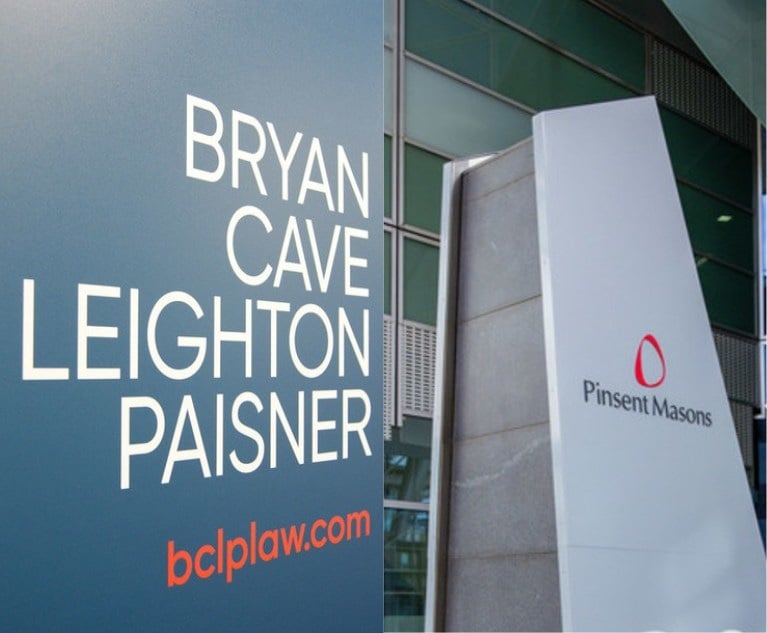Partners set to be included in pay gap reporting as MPs criticise 'painfully slow' progress on law firm diversity
Exclusion of partners described as making "a nonsense" of efforts to tackle the pay gap
August 02, 2018 at 06:19 AM
4 minute read
MPs have criticised law firms for making "painfully slow" progress on gender diversity, in a report by the Business, Energy and Industrial Strategy Committee which calls for partners to be included in next year's pay gap reporting.
The report, released today (2 August) on the back of a parliamentary inquiry into the effectiveness of the first year of reporting, describes the exclusion of partners from last year's reporting as making "a nonsense" of efforts to tackle the pay gap.
Law firms and other LLPs were not required to include partner remuneration in their calculations as they are not technically employees, but the report calls for the government to make it compulsory for firms to include partners in the next round of reporting.
Smaller law firms and more US law firms with UK offices could also be included in the 2019 reporting, with the committee calling for last year's threshold for inclusion of 250 UK employees to be reduced to 50.
The report also issues renewed criticism of Allen & Overy's (A&O) handling of its gender pay gap reporting, after the firm refused to give up its partner figures when called upon to do so by the government earlier this year. A&O was the only magic circle firm that did not provide its 2016-17 partnership gender pay gap figures to the committee after it wrote to all five firms to request the data.
Today's report states: "We found it particularly surprising that Allen & Overy appeared unable to find a sensible way to publish, whilst others managed to do so." A&O plans to provide the select committee with a gender pay gap figure including partners for the 2017-18 financial year by September.
The committee also disparages the legal profession's efforts to improve diversity among its senior ranks, stating: "Whilst they pay lip service to their commitment to improving the representation of women… progress remains painfully slow."
It highlights Clifford Chance (CC) as an example of the lack of progress, noting that the firm – which has set a target of achieving a 30% female partnership – has seen an increase from 16.5% to only 21% since 2009.
The report states that it will take "many years" for legal firms to begin to "look anything like gender-balanced at the more senior levels", and urges firms to "redouble efforts to speed things up".
While acknowledging that there will be challenges to implement changes to the requirements in time for next year's reporting, the report calls "for the necessary amendments to made in one go, before the publication of the next round of statistics next year".
"Whilst this approach might limit comparability with the first year of data and require some swift consultation, there is benefit in establishing reliable figures which can hopefully form a consistent database for years to come," the report states.
Discussions over the inclusion of partners in pay gap reporting have already taken place, and this May, CC London managing partner Michael Bates and Pinsent Masons senior partner Richard Foley met with new Law Society president Christina Blacklaws to look at how to encourage more transparency next year.
In a statement, Law Society vice-president Simon Davis said: "The Law Society supports the inclusion of partner pay alongside employee pay data in gender pay gap reporting, to give solicitor firms a useful benchmark and enable an evidence-based action plan to tackle inequalities.
"We are working with the profession to develop a common set of standards that will provide the level of transparency expected by firms' clients, people and the public.
"Because partner pay is structured differently from salaries, a new reporting method will be required to ensure data is meaningful and helpful for addressing inequalities in pay. We will work with government and other professional and business services to develop an approach that is comparable across firms and industries."
For more see:
This content has been archived. It is available through our partners, LexisNexis® and Bloomberg Law.
To view this content, please continue to their sites.
Not a Lexis Subscriber?
Subscribe Now
Not a Bloomberg Law Subscriber?
Subscribe Now
NOT FOR REPRINT
© 2025 ALM Global, LLC, All Rights Reserved. Request academic re-use from www.copyright.com. All other uses, submit a request to [email protected]. For more information visit Asset & Logo Licensing.
You Might Like
View All
A&O Shearman, Cleary Gottlieb Act on $700M Dunlop Tire Brand Sale to Japan's Sumitomo


Stewarts and DAC Beachcroft Lead on £2B Leicester City Helicopter Crash Litigation

Israel's Rushed Corporate Tax May Spark Law Firm Mergers, Boost Large Firms Including Gornitzky
4 minute readTrending Stories
- 1On the Move and After Hours: Meyner and Landis; Cooper Levenson; Ogletree Deakins; Saiber
- 2State Budget Proposal Includes More Money for Courts—for Now
- 3$5 Million Settlement Reached With Stone Academy
- 4$15K Family Vacation Turned 'Colossal Nightmare': Lawsuit Filed Against Vail Ski Resorts
- 5Prepare Your Entries! The California Legal Awards Have a New, February Deadline
Who Got The Work
Michael G. Bongiorno, Andrew Scott Dulberg and Elizabeth E. Driscoll from Wilmer Cutler Pickering Hale and Dorr have stepped in to represent Symbotic Inc., an A.I.-enabled technology platform that focuses on increasing supply chain efficiency, and other defendants in a pending shareholder derivative lawsuit. The case, filed Oct. 2 in Massachusetts District Court by the Brown Law Firm on behalf of Stephen Austen, accuses certain officers and directors of misleading investors in regard to Symbotic's potential for margin growth by failing to disclose that the company was not equipped to timely deploy its systems or manage expenses through project delays. The case, assigned to U.S. District Judge Nathaniel M. Gorton, is 1:24-cv-12522, Austen v. Cohen et al.
Who Got The Work
Edmund Polubinski and Marie Killmond of Davis Polk & Wardwell have entered appearances for data platform software development company MongoDB and other defendants in a pending shareholder derivative lawsuit. The action, filed Oct. 7 in New York Southern District Court by the Brown Law Firm, accuses the company's directors and/or officers of falsely expressing confidence in the company’s restructuring of its sales incentive plan and downplaying the severity of decreases in its upfront commitments. The case is 1:24-cv-07594, Roy v. Ittycheria et al.
Who Got The Work
Amy O. Bruchs and Kurt F. Ellison of Michael Best & Friedrich have entered appearances for Epic Systems Corp. in a pending employment discrimination lawsuit. The suit was filed Sept. 7 in Wisconsin Western District Court by Levine Eisberner LLC and Siri & Glimstad on behalf of a project manager who claims that he was wrongfully terminated after applying for a religious exemption to the defendant's COVID-19 vaccine mandate. The case, assigned to U.S. Magistrate Judge Anita Marie Boor, is 3:24-cv-00630, Secker, Nathan v. Epic Systems Corporation.
Who Got The Work
David X. Sullivan, Thomas J. Finn and Gregory A. Hall from McCarter & English have entered appearances for Sunrun Installation Services in a pending civil rights lawsuit. The complaint was filed Sept. 4 in Connecticut District Court by attorney Robert M. Berke on behalf of former employee George Edward Steins, who was arrested and charged with employing an unregistered home improvement salesperson. The complaint alleges that had Sunrun informed the Connecticut Department of Consumer Protection that the plaintiff's employment had ended in 2017 and that he no longer held Sunrun's home improvement contractor license, he would not have been hit with charges, which were dismissed in May 2024. The case, assigned to U.S. District Judge Jeffrey A. Meyer, is 3:24-cv-01423, Steins v. Sunrun, Inc. et al.
Who Got The Work
Greenberg Traurig shareholder Joshua L. Raskin has entered an appearance for boohoo.com UK Ltd. in a pending patent infringement lawsuit. The suit, filed Sept. 3 in Texas Eastern District Court by Rozier Hardt McDonough on behalf of Alto Dynamics, asserts five patents related to an online shopping platform. The case, assigned to U.S. District Judge Rodney Gilstrap, is 2:24-cv-00719, Alto Dynamics, LLC v. boohoo.com UK Limited.
Featured Firms
Law Offices of Gary Martin Hays & Associates, P.C.
(470) 294-1674
Law Offices of Mark E. Salomone
(857) 444-6468
Smith & Hassler
(713) 739-1250









